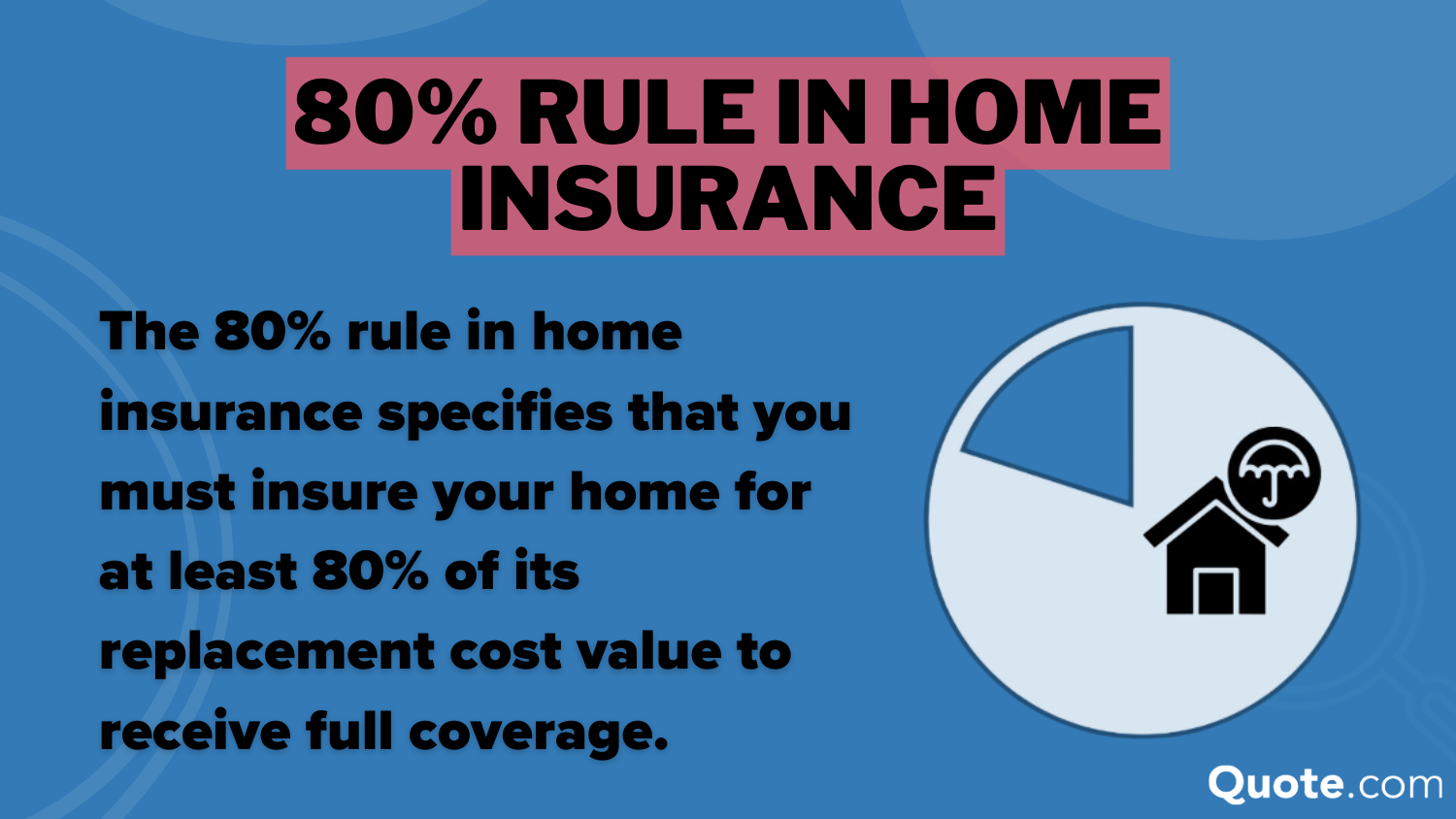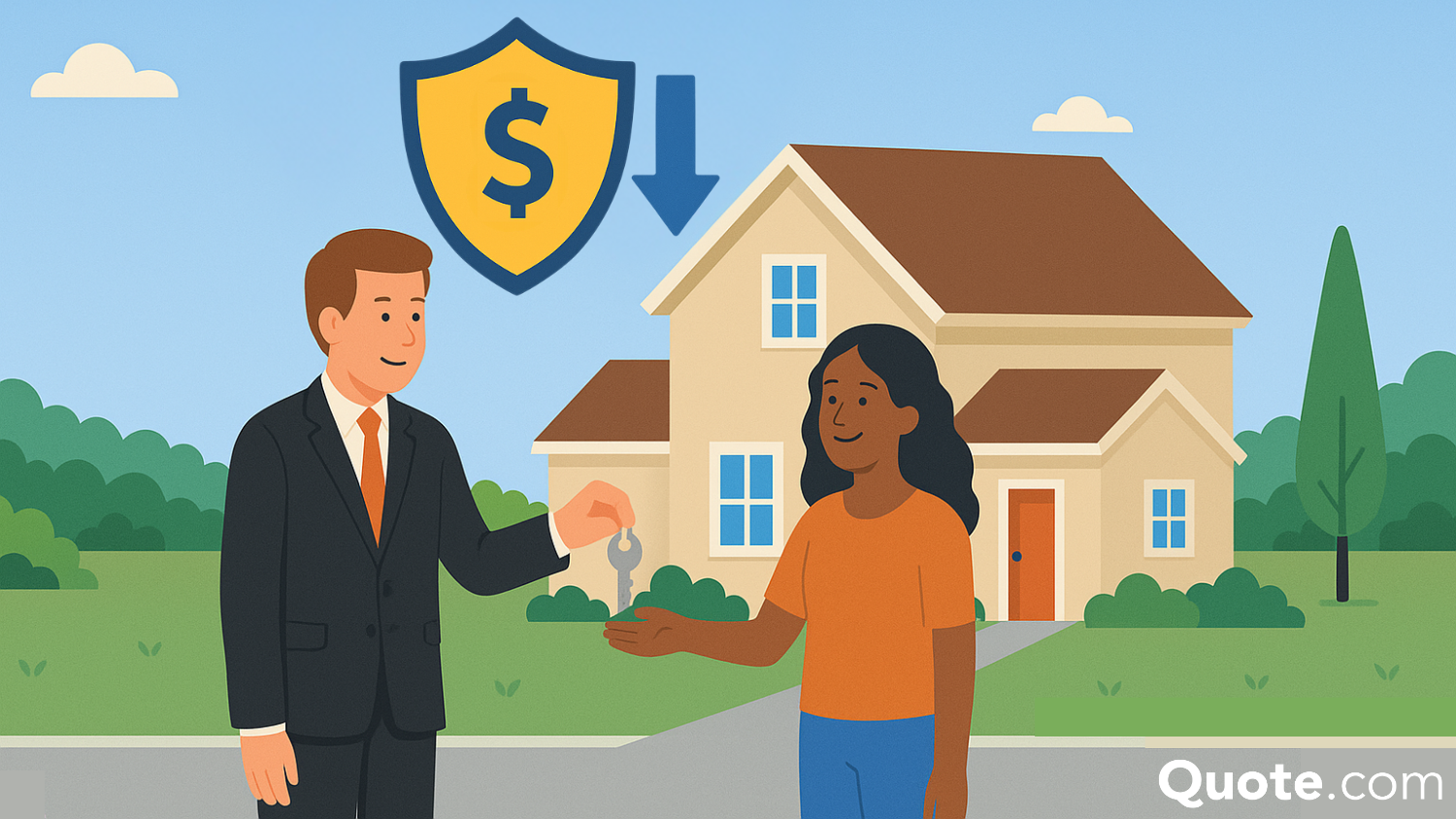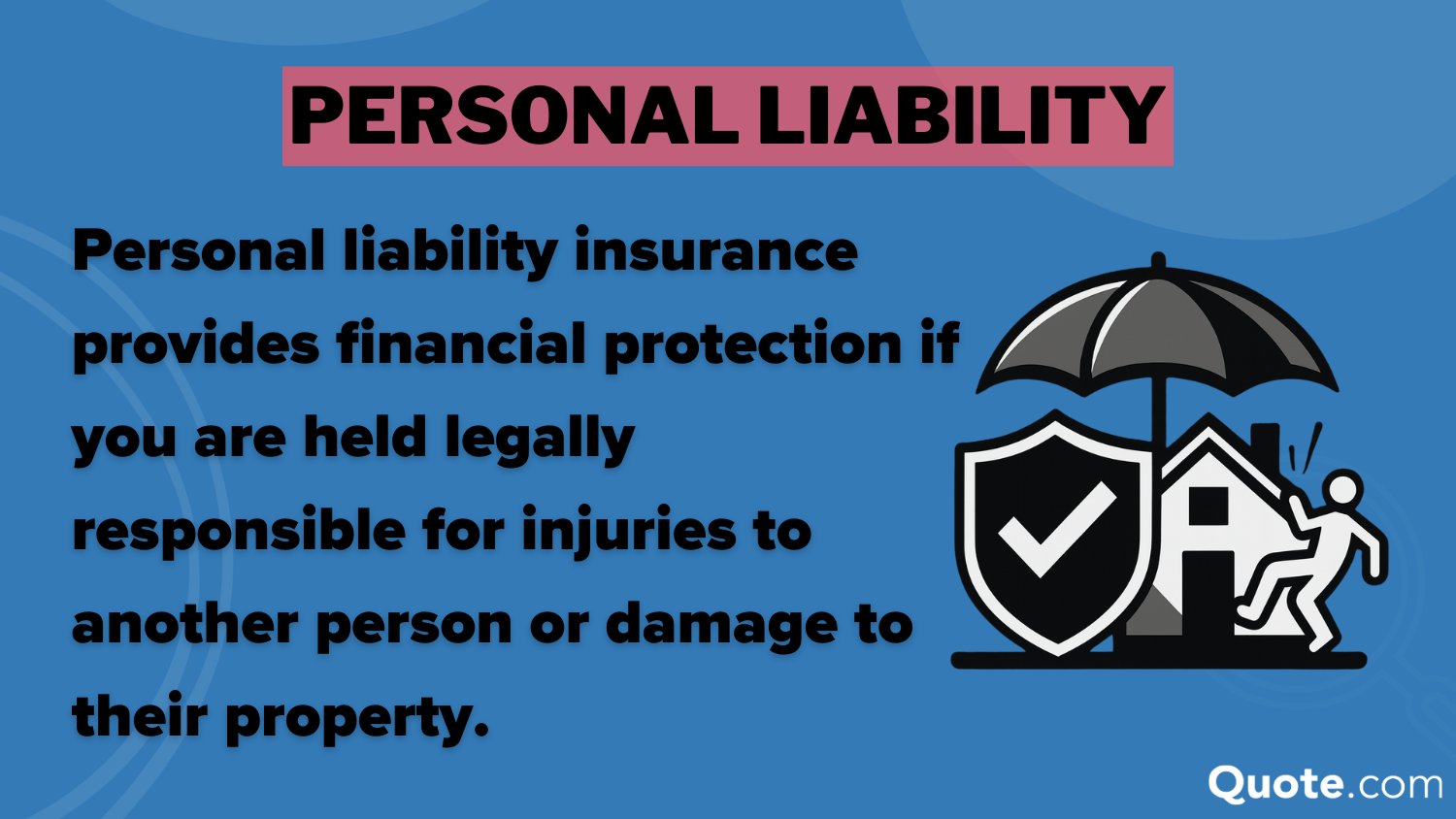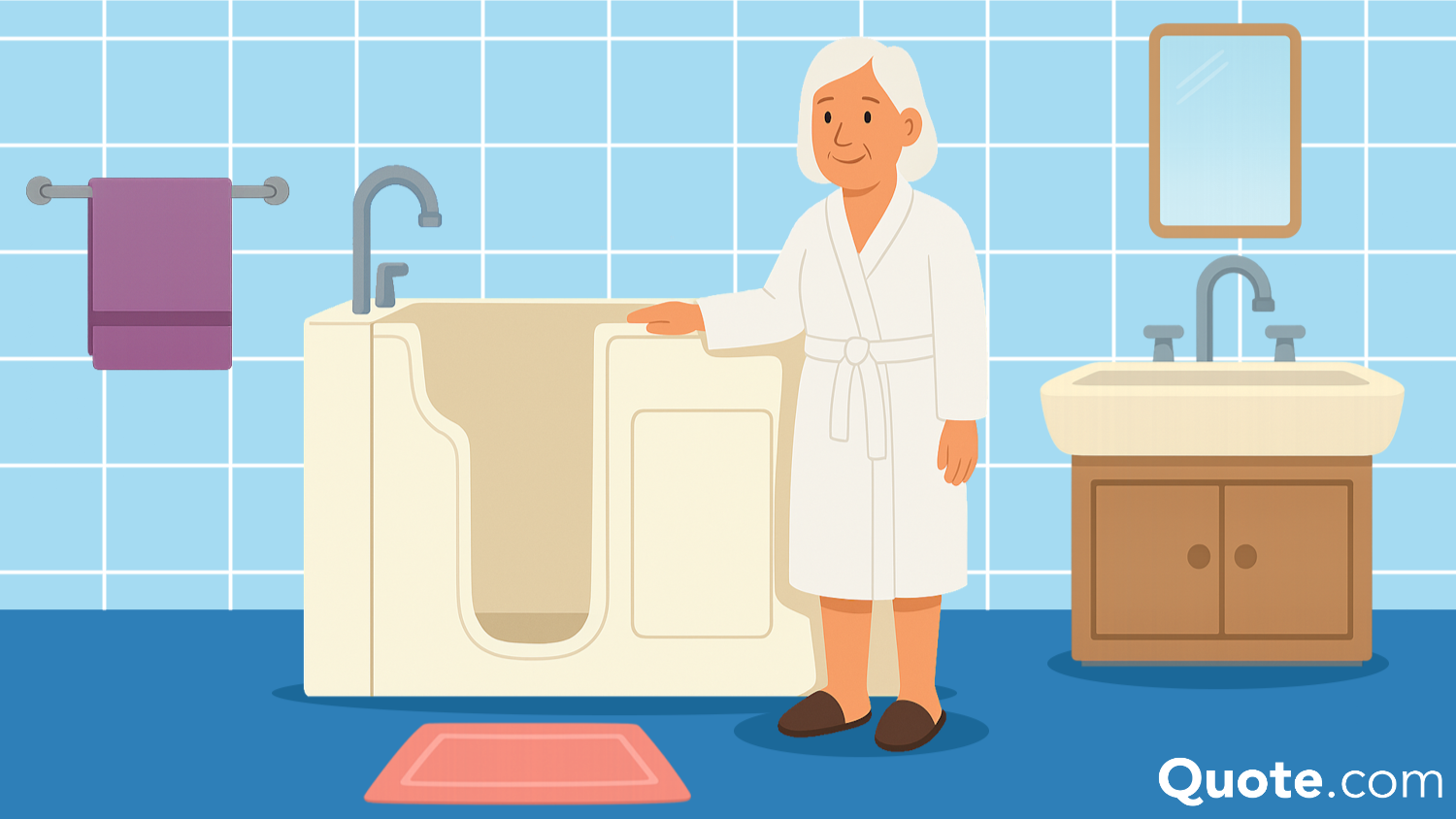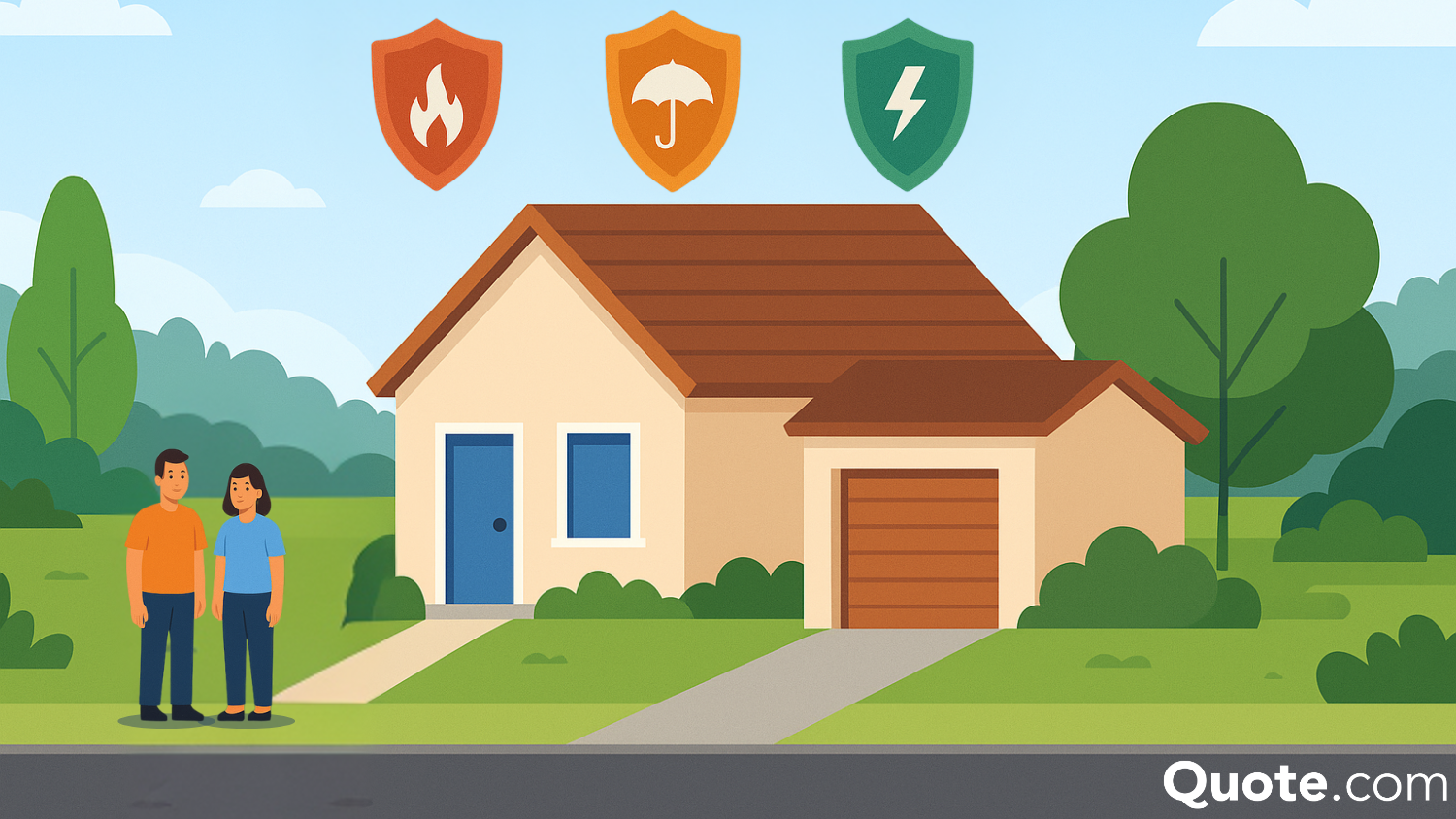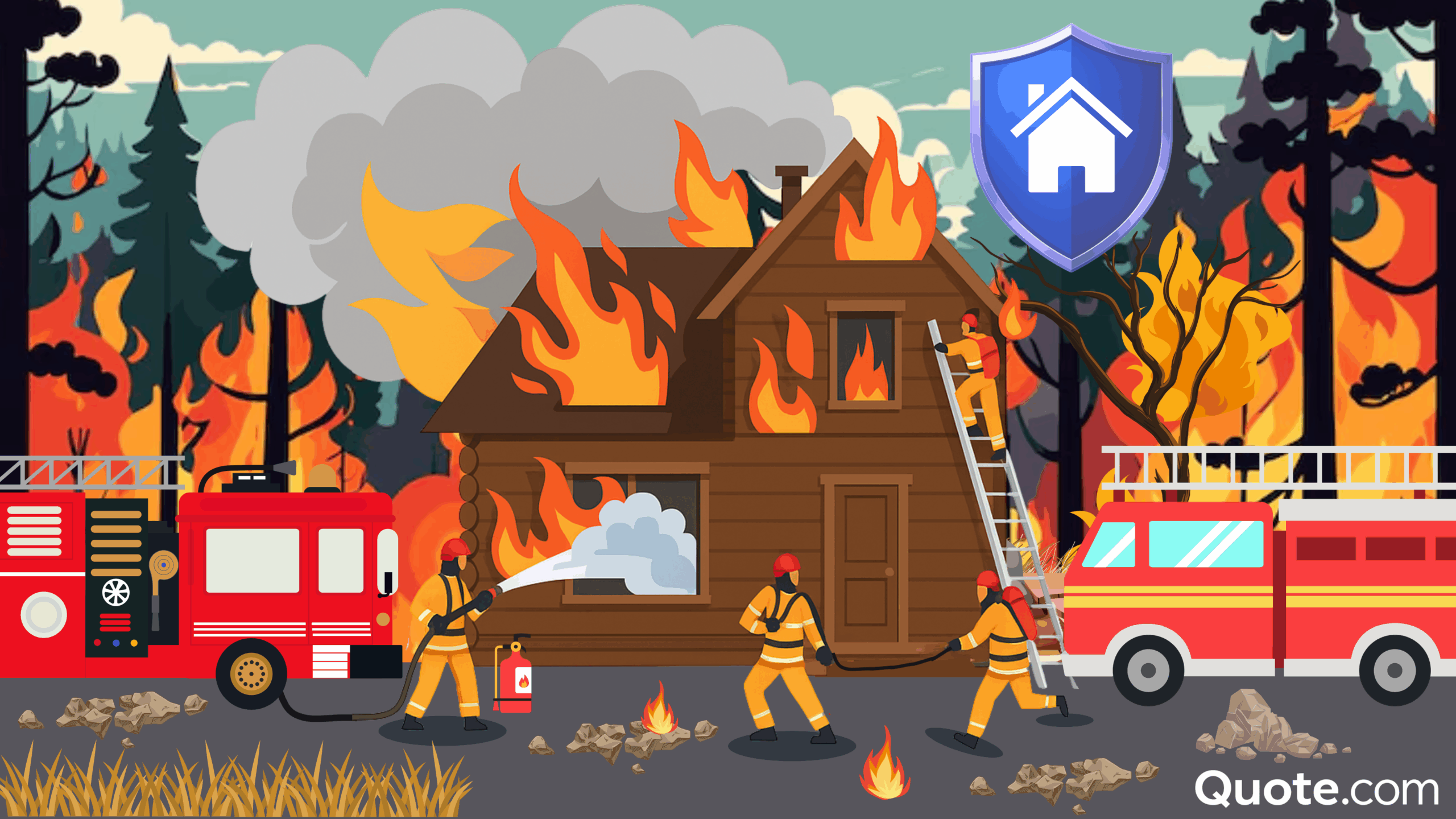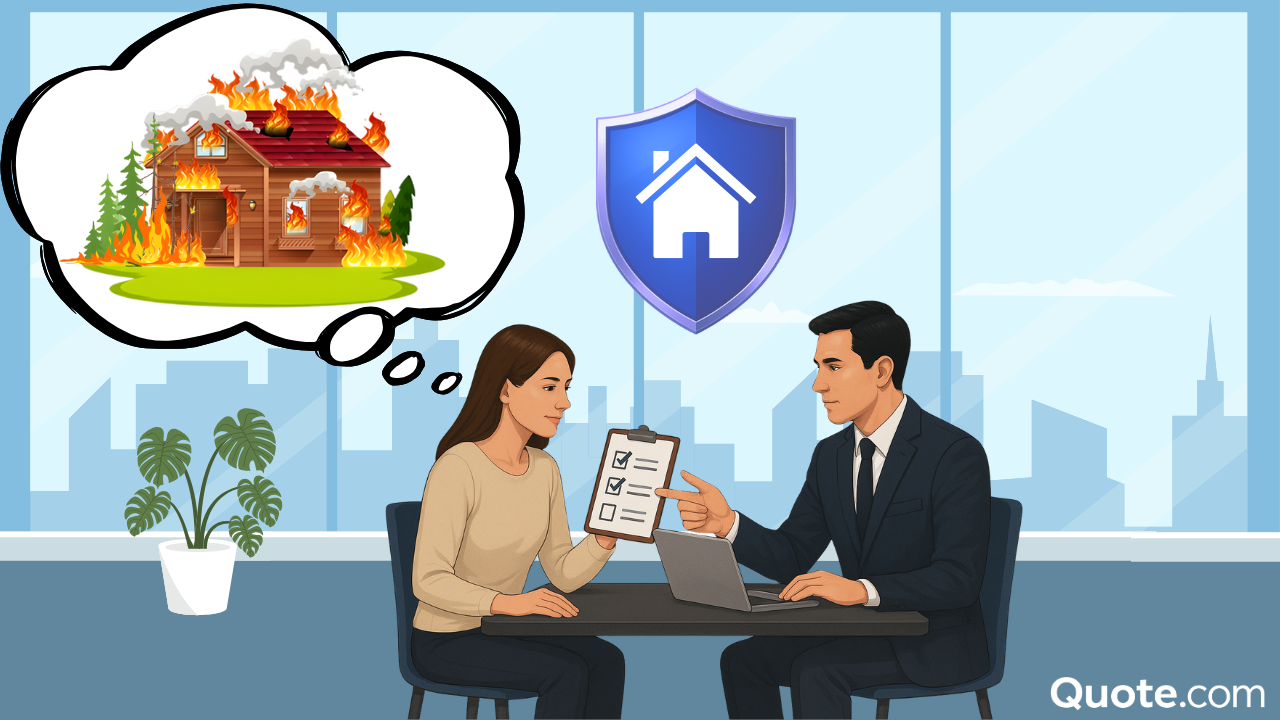Best Insurance for High-Risk Homes in 2025
Chubb, State Farm, and Nationwide provide the best insurance for high-risk homes, offering strong coverage and dependable support starting at $90 per month. State Farm high-risk homeowners insurance offers affordable flood and wildfire add-ons to help protect homeowners in disaster-prone areas.
Read more Secured with SHA-256 Encryption




Table of Contents
Table of Contents


Head of Content
Meggan McCain, Head of Content, has been a professional writer and editor for over a decade. She leads the in-house content team at Quote.com. With three years dedicated to the insurance industry, Meggan combines her editorial expertise and passion for writing to help readers better understand complex insurance topics. As a content team manager, Meggan sets the tone for excellence by guiding c...
Meggan McCain


Managing Editor
Daniel S. Young began his professional career as chief editor of The Chanticleer, a Jacksonville State University newspaper. He also contributed to The Anniston Star, a local newspaper in Alabama. Daniel holds a BA in Communication and is pursuing an MA in Journalism & Media Studies at the University of Alabama. With a strong desire to help others protect their investments, Daniel has writt...
Scott Young


Mortgage Loan Originator
Steve Crowell is a New Hampshire based mortgage loan originator with Luminate Home Loans, Inc. After graduating from the University of New Hampshire in 2003 with a BS in Business and Economics and a BA in History, he went on to get his broker license in 2005. In 2021, he was recognized as a Luminate Home Loans “Circle of Excellence” top agent. Steve works as a trusted resource for clients w...
Steve Crowell
Updated October 2025
The best insurance for high-risk homes starts at $90 per month, with Chubb, State Farm, and Nationwide leading for their dependable protection and value.
- Top insurers offer fast claims and reliable protection for homeowners
- Chubb stands out with inspections and strong prevention services
- Smart home devices can cut premiums by over 10%
Chubb shines with high dwelling limits and extended replacement cost coverage that safeguard homes from total loss. State Farm keeps costs low while offering intense wildfire and windstorm protection.
Nationwide stands out with flexible add-ons, such as flood and water backup coverage, that give homeowners extra peace of mind against severe damage.
Top 10 Companies: Best Insurance for High-Risk Homes| Company | Rank | Claims Satisfaction | A.M. Best | Best for |
|---|---|---|---|---|
| #1 | 688 / 1,000 | A++ | High-Value Homes | |
| #2 | 643 / 1,000 | A++ | Wildfire Coverage | |
| #3 | 641 / 1,000 | A+ | Storm Resilience | |
 | #4 | 638 / 1,000 | A | Water Damage |
| #5 | 631 / 1,000 | A+ | Flood Protection | |
| #6 | 617 / 1,000 | A | Older Homes | |
| #7 | 609 / 1,000 | A++ | Coastal Properties | |
| #8 | 609 / 1,000 | A | Fire-Prone Areas | |
 | #9 | 596 / 1,000 | A | Hurricane Zones |
| #10 | 594 / 1,000 | A | Digital Claims |
Read on to explore different types of homeowners insurance policies that will protect your high-risk property.
Start comparing the best homeowners insurance companies for high-risk homes near you with our free quote tool.
Best High-Risk Homeowners Insurance Rates
The cost of high-risk home insurance depends on your home’s value and how much coverage you choose. Premiums naturally go up with higher dwelling coverage.
Homeowners in areas more prone to floods, storms, or wildfires usually pay more because rebuilding is expensive and claims happen more often.
High-Risk Home Insurance Monthly Rates by Dwelling Coverage| Company | $200K | $300K | $500K | $1M |
|---|---|---|---|---|
| $145 | $178 | $255 | $405 | |
 | $149 | $182 | $268 | $418 |
| $153 | $187 | $275 | $445 | |
| $157 | $190 | $285 | $470 | |
 | $161 | $195 | $295 | $485 |
| $165 | $200 | $305 | $500 | |
| $181 | $220 | $345 | $580 | |
| $169 | $205 | $315 | $520 | |
| $173 | $210 | $325 | $540 | |
| $177 | $215 | $335 | $560 |
Every company handles risk in its own way, which explains why it’s so important to compare home insurance quotes from multiple providers.
For instance, Allstate and American Family tend to offer better deals for homes with safety upgrades or lower risk levels.
Monthly rates go up with higher dwelling coverage, but it’s worth it. That extra protection keeps you from paying out of pocket later.
Dani Best Licensed Insurance Agent
Chubb homeowners insurance is built for higher-value homes, so rates can be higher, while Nationwide keeps things steady with more affordable pricing.
Liberty Mutual high-risk homeowners insurance typically costs a bit more, but that’s because it includes stronger flood and hurricane protection—something worth having if you live in a high-risk area.
How Different Risks Impact Home Insurance Prices
When you’re shopping for homeowners insurance for a high-risk home, your rate really comes down to the unique risks tied to your property. Insurers look at details like how your home is built, how safe your neighborhood is, and whether you live in an area that’s more likely to face floods or wildfires.
If you live in an area with frequent floods or fires, your rates will likely be higher because the risk is higher. It’s important to know how to file a home insurance claim after a wildfire, since homeowners in high-risk areas often face recovery situations.
High-Risk Home Insurance Monthly Rates by Risk Factor| Company | Build Quality | Crime Rate | Fire Risk | Flood Zone |
|---|---|---|---|---|
| $162 | $174 | $186 | $198 | |
 | $167 | $179 | $191 | $203 |
| $172 | $184 | $198 | $210 | |
| $176 | $188 | $202 | $214 | |
 | $181 | $193 | $207 | $219 |
| $186 | $198 | $212 | $224 | |
| $205 | $217 | $233 | $245 | |
| $191 | $203 | $219 | $231 | |
| $196 | $208 | $225 | $237 | |
| $200 | $212 | $229 | $241 |
Homes built with durable materials in safer areas usually cost less to insure, while upgrading your roof, adding security, or improving drainage can lower costs.
Comparing quotes from high-risk home insurance companies is the best way to find coverage that fits your home and budget.
How Location Impacts Insurance Rates for High-Risk Homes
Where you live greatly affects the cost of home insurance for high-risk homes. Areas prone to hurricanes, tornadoes, or wildfires pay more, while safer regions often see lower rates.
These rates are based on a 40-year-old homeowner with a $200,000 policy, offering a practical baseline to estimate home insurance costs based on where you live.
If you’re in a coastal or southern state, higher costs usually reflect the greater chance of severe weather and damage.
Homeowners in northern or inland areas tend to save more since big storms are less common. However, if you choose higher limits, your coverage will cost more.
Read More: Home Insurance Rates by State
How Credit Scores Affect Insurance Rates for High-Risk Homes
Your credit score has a big impact on what you pay for home insurance for high-risk properties, and knowing how it affects your premium can help you save.
Insurers use credit history as one way to measure risk, which means homeowners with higher scores often pay lower premiums. On the other hand, those with lower credit scores may pay more, as insurers see them as a greater financial risk.
High-Risk Home Insurance Monthly Rates by Credit Score| Company | Excellent (800+) | Good (670-799) | Fair (580-669) | Poor (< 580) |
|---|---|---|---|---|
| $145 | $160 | $181 | $210 | |
 | $149 | $164 | $186 | $216 |
| $153 | $168 | $191 | $222 | |
| $157 | $173 | $196 | $228 | |
 | $161 | $177 | $201 | $233 |
| $165 | $182 | $206 | $239 | |
| $181 | $199 | $226 | $262 | |
| $169 | $186 | $211 | $245 | |
| $173 | $190 | $216 | $251 | |
| $177 | $195 | $221 | $257 |
When credit drops, even slightly, the difference in monthly premiums can add up quickly. That’s why maintaining a good payment history, keeping balances low, and monitoring your credit can make a real impact on what you pay.
For high-risk properties where rates are already higher, maintaining strong credit can make coverage much more affordable and accessible in the long run.
Learn More: Best Home Insurance for High-Value Properties
How Deductibles Influence High-Risk Home Insurance
Your insurance deductible has a big impact on what you pay for high-risk home insurance, and it’s one of the easiest ways to control your premium.
A deductible is what you pay before your insurer steps in, and it affects both your monthly cost and how much you’ll owe if something happens to your home.
High-Risk Home Insurance Monthly Rates by Deductible| Company | $1K | $2.5K | $5K | $10K |
|---|---|---|---|---|
| $131 | $116 | $102 | $90 | |
 | $134 | $119 | $104 | $92 |
| $138 | $122 | $107 | $95 | |
| $141 | $126 | $110 | $97 | |
 | $145 | $129 | $113 | $99 |
| $149 | $132 | $116 | $102 | |
| $163 | $145 | $127 | $111 | |
| $152 | $135 | $118 | $104 | |
| $156 | $138 | $121 | $106 | |
| $159 | $142 | $124 | $109 |
Lower deductibles usually mean higher monthly payments, while higher ones lower your premiums but leave you paying more out of pocket when filing a claim.
If you live in a high-risk area, like one prone to floods, fires, or severe storms, picking the right insurance deductible is all about balance.
Think of your deductible as your share of the risk. In particular, if you rarely file claims, going higher could help you save each month.
Tracey L. Wells Licensed Insurance Agent & Agency Owner
A higher deductible might make sense if you rarely file claims and want to save money each month, but a lower deductible can be a lifesaver after major damage.
The key is finding a balance that fits your budget and offers peace of mind. Comparing the best high-risk homeowners insurance options helps you choose the right deductible for your needs.
Free Home Insurance Comparison
Compare Quotes From Top Companies and Save
Secured with SHA-256 Encryption
High-Risk Home Insurance Coverage Options
High-risk homeowners insurance starts with dwelling coverage, which helps rebuild your home after damage from fires, storms, or other disasters.
You should have enough insurance to cover at least 80% of your home’s value, or more if you need high-risk homeowners insurance in California, where wildfires and earthquakes are common. If you’re also a driver in the state, exploring the best car insurance in California can help you bundle both policies and save on premiums.
Some insurers, like Chubb or State Farm, offer extended replacement cost coverage that can reach up to 200% of your home’s insured value, helping cover rising construction costs after a major loss.
As part of your homeowners insurance coverage, you’ll also get personal property coverage, which helps replace your furniture, appliances, and electronics at their full replacement value instead of what they’re worth today.
Personal liability coverage often ranges from $500,000 to $1 million or more and helps if someone gets hurt on your property. You’ll also have loss-of-use coverage, which helps pay for hotel stays and meals while your home is being repaired.
For homes in high-risk areas, adding flood insurance, wildfire protection, or ordinance coverage helps ensure your home and finances recover quickly after a disaster.
Tips to Lower High-Risk Home Insurance Rates
You can actually cut homeowners insurance costs by making your home stronger, safer, and less likely to face damage.
The best high-risk homeowners insurance companies really notice these upgrades when setting rates:
- Upgrade Your Roof and Siding: Switching to impact-resistant materials can cut your premium by up to 15%.
- Modernize Old Wiring or Pipes: Updating outdated systems helps prevent damage from fires or leaks and can lower your premium.
- Install Smart Safety Tech: Smoke detectors, water sensors, and security systems demonstrate to insurers that your home is well-protected.
- Stay On Top of Maintenance: Regular upkeep—like trimming trees and fixing cracks—helps prevent small problems from turning into big claims.
- Schedule a Windstorm Inspection: If you live in a hurricane-prone area, passing one of these inspections can qualify you for special mitigation credits.
Show your insurer that your home is safer and less likely to need major repairs by upgrading your roof or improving drainage. It can help lower your insurance costs and better protect your property.
These efforts work even better when paired with the best auto and home insurance bundles. Combining policies, installing smart safety tech, or switching to energy-efficient systems can further reduce rates with discounts.
Top Discounts for High-Risk Home Insurance| Company | Bundling | Green Home | New Build | Safety Devices |
|---|---|---|---|---|
| 15% | 5% | 5% | 10% | |
 | 10% | 5% | 6% | 29% |
| 10% | 7% | 8% | 8% | |
| 12% | 5% | 8% | 10% | |
 | 14% | 5% | 5% | 10% |
| 11% | 7% | 7% | 10% | |
| 19% | 8% | 5% | 9% | |
| 20% | 5% | 6% | 17% | |
| 13% | 6% | 5% | 9% | |
| 13% | 4% | 4% | 10% |
When you put it all together, you’re not just saving money — you’re building stronger protection and keeping your home safer for the long run.
It shows insurers that your home carries less risk, helping you save more and feel secure long-term.
Top Insurance Providers for High-Risk Homes
State Farm leads in high-risk home insurance with a 24% market share, thanks to reliable wildfire coverage and fast claims for disaster-prone areas.
Allstate and Liberty Mutual make up another two quarters of the market with trusted protection against floods and hurricanes that homeowners on both coasts depend on.
Farmers makes up 18% of the market and is recognized for supporting homeowners after wildfires with dependable coverage. Nationwide comes in at 17%, offering adaptable storm protection that suits properties in high-risk locations.
Together, these five providers dominate the high-risk home insurance market, but homeowners looking for the cheapest home insurance companies should still compare quotes to find the best mix of coverage, cost, and reliability.
#1 – Chubb: Best for High-Value Homes
Pros
- High-Value Property Protection: Chubb fully rebuilds high-risk homes with luxury designs, offering up to 200% replacement cost coverage.
- Masterpiece Risk Consulting: Homeowners of high-risk homes receive inspections, thermal imaging, and upgrades to prevent future fire and water damage.
- Exceptional Financial Strength: With an A.M. Best A++ Rating, Chubb gives high-risk homes reliable stability and quick, worry-free claim payments.
Cons
- Strict Eligibility Requirements: Chubb, one of the top homeowners insurance companies, closely reviews high-risk homes before approval, often requiring inspections.
- Fewer Policy Bundles: Chubb doesn’t offer as many bundling options as other insurers, so saving through multi-policy discounts can be harder.
#2 – State Farm: Best for Wildfire Coverage
Pros
- Wildfire Defense Coverage: State Farm offers extra dwelling protection and up to 20% off for homes in wildfire zones.
- High Claim Satisfaction: Offers dependable, prompt wildfire response for high-risk homes, averaging less than 10 days to close fire claims.
- Exceptional Financial Stability: With an A.M. Best A++ Rating, State Farm gives high-risk homes reliable support and quick payouts after wildfire losses.
Cons
- Coverage Limits in Tier 3 Zones: Dwelling protection for high-risk homes in extreme fire-risk regions may require endorsement upgrades.
- Availability Gaps: According to a State Farm insurance review, the company limits issuance of new high-risk home policies in wildfire-prone states like California.
#3 – Nationwide: Best for Storm Resilience
Pros
- Storm Damage Protection: Nationwide’s Roof Replacement Cost option helps high-risk homes recover faster by restoring full roof value after hail, wind, or hurricane damage.
- Strong Financial Backing: With an A.M. Best A+ Rating, Nationwide gives high-risk homes dependable claim support and secure payouts when major storms strike.
- Flexible Deductibles: Policyholders in high-risk homes can choose storm deductibles ranging from 1% to 5%, balancing coverage and affordability.
Cons
- Higher Rates in Coastal Zones: Storm-exposed high-risk homes may pay 25–35% more than inland counterparts.
- Bundling Restrictions: The Nationwide insurance review notes that high-risk homes cannot combine flood and wind endorsements under one policy.
#4 – American Family: Best for Water Damage
Pros
- Water Damage Protection: American Family’s Water Backup endorsement covers up to $25,000 in sump pump overflow or sewer backup losses for high-risk homes.
- Smart Home Device Discount: High-risk homes with water sensors or automatic shutoff systems can save up to 10%.
- Comprehensive Claim Assistance: American Family is available 24/7 with fast claim help, making it easier for high-risk homes to recover from water damage.
Cons
- Flood Zone Exclusions: According to the American Family insurance review, if you live in a flood-prone area, high-risk homes may need an extra NFIP policy for full coverage.
- Higher Water Deductibles: Deductibles for high-risk homes usually start at $1,000 and can rise to $2,500 for multiple water-damage claims.
#5 – Allstate: Best for Flood Protection
Pros
- Comprehensive Flood Endorsement: Through NFIP integration, Allstate insures high-risk homes with up to $250,000 in dwelling coverage and $100,000 in contents coverage.
- Claim RateGuard: According to the Allstate insurance review, it prevents flood-related premium hikes for high-risk homes after a single claim.
- Strong Financial Rating: Backed by an A+ A.M. Best Rating, Allstate offers reliable protection and peace of mind for high-risk homes facing frequent flooding.
Cons
- Limited Maximum Coverage: High-risk homes valued above NFIP limits require an additional private flood policy.
- Endorsement Cost Increase: Adding flood coverage raises premiums for high-risk homes by roughly $25–$40 monthly.
#6 – The Hanover: Best for Older Homes
Pros
- Historic Restoration Coverage: Pays for authentic craftsmanship and original materials in restoring vintage high-risk homes.
- Guaranteed Replacement Option: It covers the entire rebuilding cost for high-risk homes, even if the repairs end up costing more than the policy limit.
- Home Maintenance Benefits: The Hanover offers complimentary home inspections and maintenance advice to help high-risk homes prevent damage before it happens.
Cons
- Extended Repair Times: Specialty materials for aging high-risk homes can delay claim completion.
- Limited State Availability: According to The Hanover insurance review, the company’s restoration policy for high-risk homes is available in only 32 states.
#7 – Travelers: Best for Coastal Properties
Pros
- Coastal Wind and Surge Protection: Travelers’ Coastal Advantage endorsement helps high-risk homes stay protected from hurricane winds and storm surges.
- Flood Guard Add-On: This add-on boosts coverage past NFIP limits, giving high-risk homes up to $500,000 in structural protection.
- Excellent Financial Strength: With an A.M. Best A++ Rating, Travelers gives high-risk homes reliable claim support when major coastal storms hit.
Cons
- Wind Deductible Requirement: Coastal high-risk homes must carry 2%–5% hurricane deductibles.
- Premium Variability: According to the Travelers insurance review, rates for high-risk homes can vary significantly depending on how close they are to the shoreline.
#8 – Farmers: Best for Fire-Prone Areas
Pros
- Wildfire Defense Program: Farmers helps protect high-risk homes in fire zones by clearing defensible space and applying on-site fire retardants before flames spread.
- Rebuilding Cost Guarantee: According to the Farmers insurance review, it covers up to 125% of the dwelling limit, giving high-risk homes coverage for rebuilding after damage.
- Home Safety Discounts: High-risk homes with fire-resistant roofs, sprinkler systems, or smart smoke detectors can save more on premiums with Farmers.
Cons
- Strict Underwriting Rules: High-risk homes with a history of fire damage may experience slower approval times for coverage.
- Higher Terrain Rates: Mountain-area high-risk homes often pay around 20% more due to elevated wildfire risk.
#9 – Liberty Mutual: Best for Hurricane Zones
Pros
- Hurricane Deductible Flexibility: Liberty Mutual lets high-risk homes choose between 1% and 3% hurricane deductibles, making it easier to manage repair costs.
- Temporary Living Expense Coverage: High-risk homes can get up to $15,000 for hotel or rental stays while repairs are being made after a hurricane.
- Home Protector Plus Add-On: This option provides high-risk homes with extended dwelling coverage and inflation protection after major storm damage.
Cons
- Storm Surge Exclusion: Standard policies for high-risk homes don’t include flood damage unless you add an NFIP-backed policy.
- Seasonal Rate Increases: According to the Liberty Mutual insurance review, premiums for high-risk homes often rise during hurricane season when storm risks are higher.
#10 – Safeco: Best for Digital Claims
Pros
- Digital Claim Center: Safeco makes it simple for high-risk homes to file and track claims in real time right from the mobile app.
- Protective Device Discount: According to the Safeco insurance review, high-risk homes with smart smoke detectors or motion alarms can save up to 15% on premiums.
- 24/7 Customer Support: Safeco’s support team is available anytime, giving high-risk homes quick help and guidance during stressful claim situations.
Cons
- Moderate Claim Satisfaction: With a 594/1,000 score, high-risk homes might notice claims take a bit longer than with top-rated insurers.
- Limited Add-On Options: High-risk homes have fewer policy upgrades and endorsement options available.
Free Home Insurance Comparison
Compare Quotes From Top Companies and Save
Secured with SHA-256 Encryption
Get Cheap High-Risk Home Insurance Today
The best insurance for high-risk homes often comes from Chubb, State Farm, and Nationwide, which know how to protect homes in areas at risk for earthquakes and wildfires.
Chubb provides higher rebuild limits so you can recover after damage, and State Farm keeps rates reasonable for homes in disaster-prone areas. Nationwide’s flexible options ensure homeowners insurance covers wildfires, floods, and heavy storms, making it a solid choice for those who can’t get homeowners insurance because of claims.
You can save money by upgrading your roof, adding safety features, or keeping a strong credit score, just like when you’re shopping for cheap coverage for your car.
If you’re ready to find the right plan for your home, use our free comparison tool and compare home insurance quotes online to see which option fits your needs best.
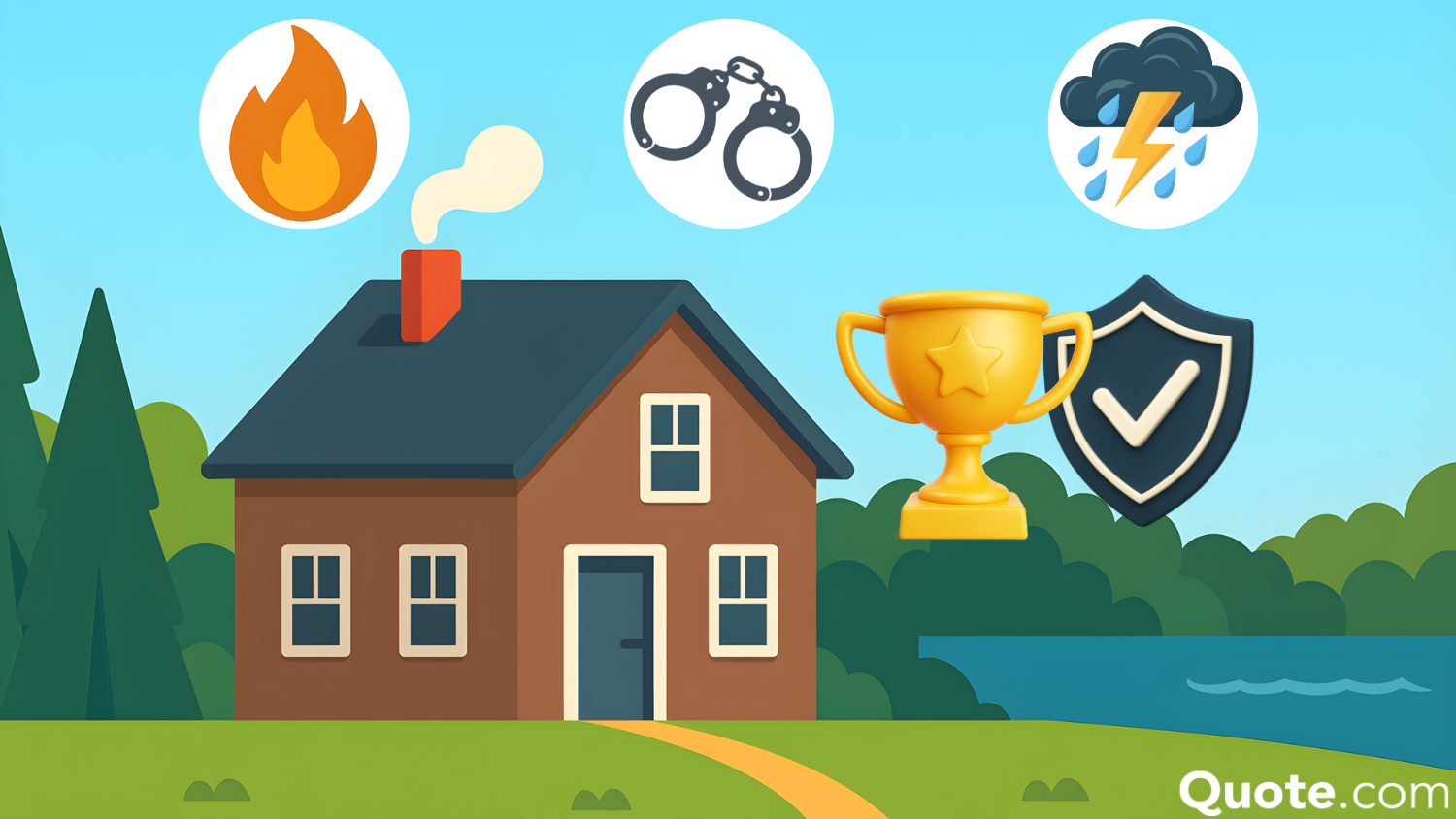
Frequently Asked Questions
Who has the best insurance for high-risk homes?
Not every company insures high-risk properties, but Chubb, State Farm, and Nationwide have the best high-risk home insurance. Chubb gives you higher rebuild limits, State Farm keeps wildfire coverage affordable, and Nationwide lets you customize flood and storm protection to fit your needs.
Is it better to use a local or national insurer for a high-risk home?
Local insurers tend to understand better regional risks, such as hurricanes in Florida and wildfires in California. National insurers, however, often offer stronger financial stability and broader coverage add-ons such as flood or water backup protection.
What is high-risk homeowners insurance?
High-risk home insurance is designed for properties more likely to suffer damage. It’s often needed for homes in hurricane zones, older houses with structural issues, or properties with multiple past claims that standard insurers won’t cover. Learn how solar cells work to qualify for energy-efficiency discounts and help lower high-risk insurance costs.
What is considered high risk for home insurance?
A home is considered high risk for home insurance if it’s in an area prone to floods, hurricanes, wildfires, or other frequent disasters. Homes with old wiring, outdated roofs, or multiple past claims also fall into this category, as they’re more likely to experience costly damage.
How much more expensive is high-risk homeowners insurance?
Based on rate comparisons, high-risk homeowners insurance averages around $145 to $165 per month for $200,000 in coverage, while standard home insurance typically costs about $100 monthly. This means high-risk homes often pay 40% to 60% more due to greater exposure to natural disasters or structural risks.
How much is high-risk homeowners insurance?
High-risk homeowners insurance typically costs $150–$250 per month, depending on your location and home condition. For example, homes in wildfire or flood zones often cost about 25% more due to rebuilding risks and frequent claims. Enter your ZIP code to compare costs near you.
How can you reduce costs on high-risk home insurance?
You can save by installing innovative security systems, using impact-resistant roofing, or improving drainage to prevent water damage. Energy-efficient upgrades can also help you save money with solar by lowering utility costs and qualifying you for green home discounts. Keep a strong credit score and compare several insurance quotes to further reduce rates.
Can you switch back to standard home insurance later?
Yes, homeowners can switch back once their property no longer qualifies as high-risk. Upgrades such as fire-resistant roofing, updated wiring, or moving out of a flood zone often make you eligible for standard insurance again.
Do all states have FAIR Plans?
Nearly every state in the U.S. offers a FAIR Plan, which helps homeowners who can’t qualify for standard insurance. These state-backed plans usually cover things like fire, wind, and vandalism, but you’ll need to add separate protection for floods or earthquakes.
Why are high-risk insurance premiums more expensive?
Premiums are higher because homes in high-risk areas are more likely to experience costly damage. Properties near coastlines, flood zones, or wildfire-prone areas can pay 30–50% more due to a greater potential for severe losses, a pattern learned by analyzing insurance companies’ assessments of environmental and structural risks.
What are high-risk items for home insurance?
What is all-risk coverage for homeowners?
Which type of home insurance involves the highest risk?
What is the most important thing in high-risk homeowners insurance?
What is not covered by high-risk homeowners insurance?
Get a FREE Quote in Minutes
Insurance rates change constantly — we help you stay ahead by making it easy to compare top options and save.
